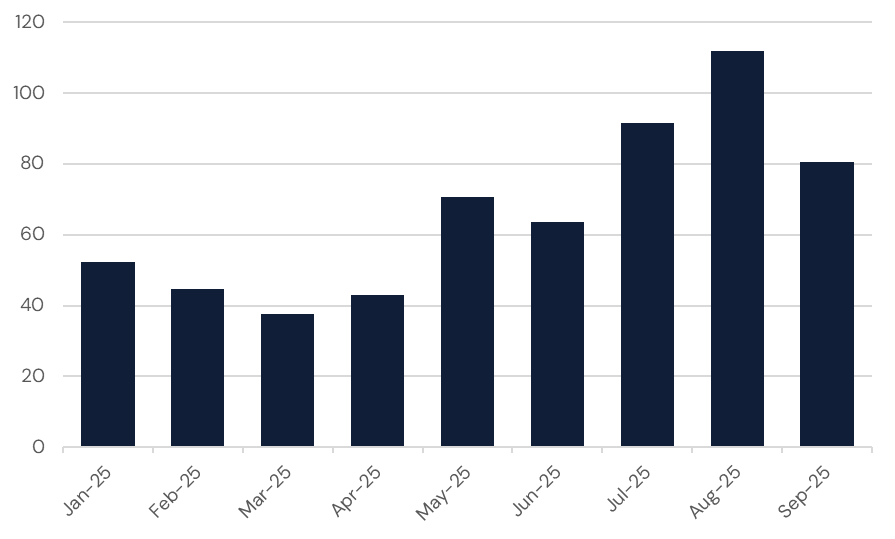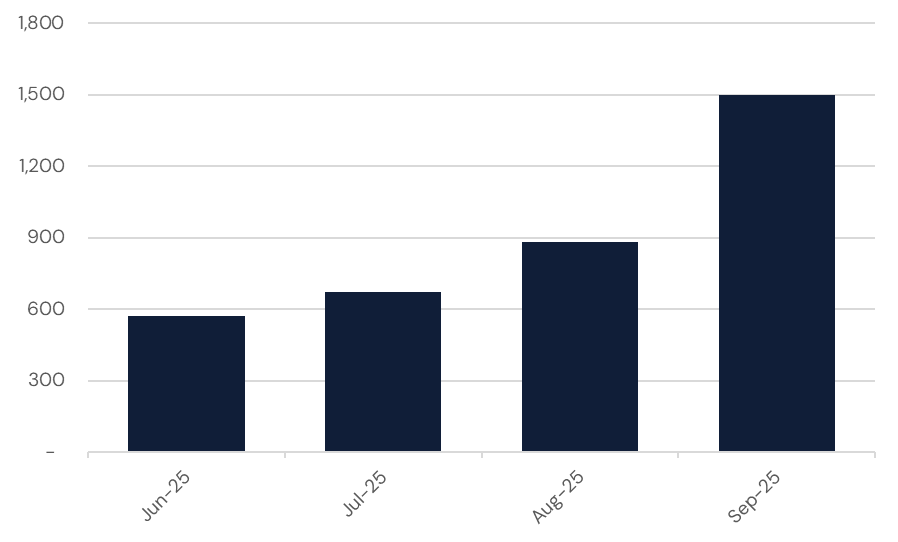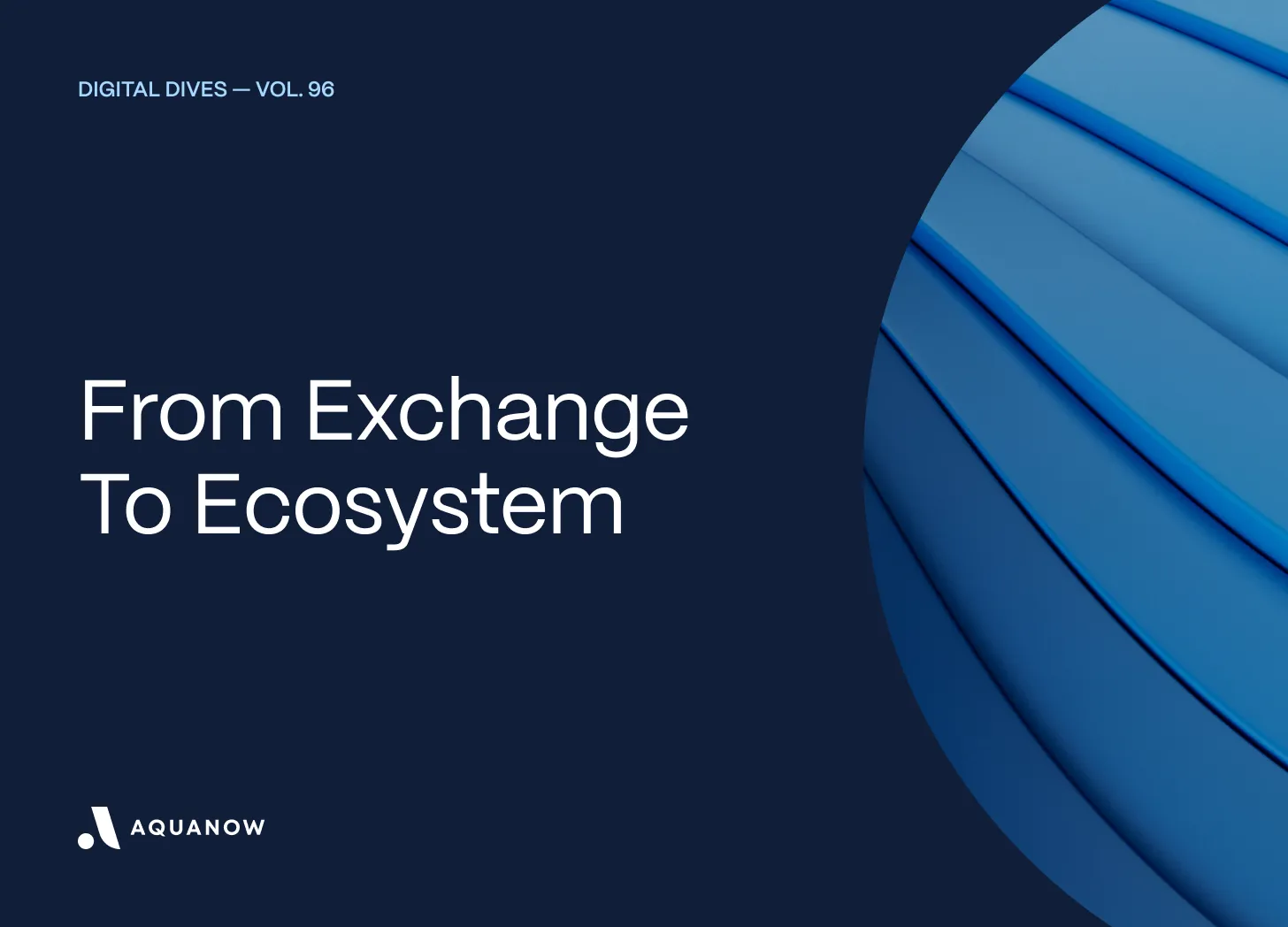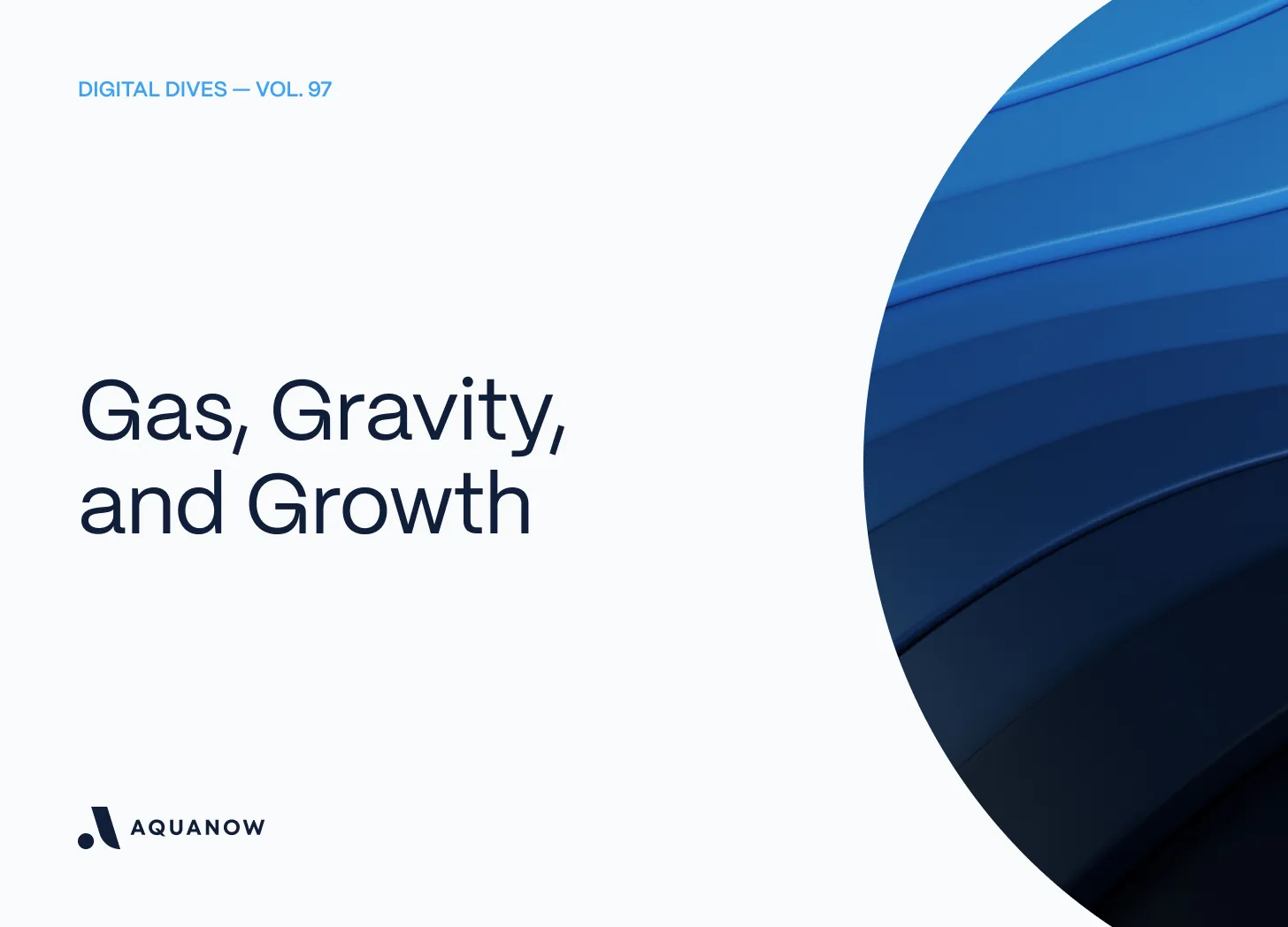Speculation has always been crypto’s secret weapon. It drives adoption, bootstraps liquidity, and creates the economic energy that powers everything else. After the implosion of FTX, many traders began to place a higher value on self-custody and transparency, yet they still demanded institutional-grade performance and deep liquidity.
Enter Hyperliquid, a platform that began as a perpetual futures DEX but has quietly evolved into something far more ambitious: an economy where trading, building, and ownership converge. Offering faster trades, a simpler design, and more transparency, the new entrant in 2023 was able to quickly erode dYdX’s 80% market share.
Perpetual Futures Exchange Market Share (by Open Interest)

Today, with a circulating market cap of over $12 billion and a growing ecosystem of native applications, Hyperliquid represents a fascinating case study for how crypto projects can evolve from single-purpose tools into thriving platforms.
The budding “Hyper Economy” offers lessons for builders and investors about interface design, token economics, and community building. It’s a story about turning speculation into sustainable value creation, but like everything else in crypto, we’re still in the early chapters of how this tale will play out.
Hyperliquid’s Origin
Hyperliquid launched with a contrarian thesis: build the best product first, raise zero venture capital, and let users become owners through merit rather than connections.
While competitors raised hundreds of millions from VCs, Hyperliquid’s team bootstrapped operations from savings and acted as the in-house market maker. They built HyperCore, their own Layer 1 blockchain optimized specifically for perpetual futures trading, capable of processing 200,000 transactions per second with sub-second finality. Through its Hyperliquidity Provider (HLP) vault, anyone can supply capital to algorithmic market-making and liquidation strategies, earning a share of trading fees in return. This democratizes a role once reserved for privileged firms, making liquidity a public good within the ecosystem and strengthening its economic moat.
The product philosophy was radically transparent. Every position, liquidation level, and PnL leaderboard became publicly visible. The implications extend beyond compliance. This model created a “social trading game” where users competed openly, building community around performance, conviction, and transparency.
The team obsessed over details that mattered to serious traders: CEX-like latency, deep order books, and APIs that institutional market makers actually wanted to use. They listened to community feedback and iterated rapidly, building trust through execution rather than marketing.
This product-first approach created something rare in crypto: genuine product-market fit before token launch. When HYPE finally went live, it wasn’t speculative vapor but a reward for users who had already proven the platform’s value through billions in trading volume.
Speculation, Reinvented
The HYPE airdrop wasn’t just a token distribution; it was a masterclass in aligning incentives. Instead of the typical launch that was accompanied by heavy selling from early backers, Hyperliquid dropped 31% of total supply directly to active users only, creating $1.2 billion in immediate value that has since grown to over $12B.
A critical element of the project’s design was then unveiled. The DEX’s trading fees don’t just disappear into a treasury; they fuel an “Assistance Fund” that continuously buys HYPE tokens on the open market. This creates a direct link between platform usage and token value, turning every trade into a small buyback event. More importantly, the Assistance Fund’s objective is to provide a safety net for systemic risk within the Hyperliquid protocol by covering edge cases like black swan events and oracle malfunctions, ensuring protocol solvency and ecosystem resilience.
HYPE Repurchases for Assistance Fund (in millions, USD)

The result is a flywheel that reinforces loyalty. Users aren’t just customers; they’re owners with skin in the game. They become evangelists because their wealth grows with the platform’s success. There are no heavy unlock events to suppress price discovery, no misaligned incentives between users and investors.
This model transforms speculation from extraction into investment. Traders aren’t just betting on price movements; they’re betting on the platform itself. The more they trade, the more valuable their ownership stake becomes.
From DEX to Hyper-EVM
Trading was just the beginning. In late 2024, Hyperliquid launched HyperEVM, an Ethereum-compatible environment that lets entrepreneurs build applications directly on the trading-optimized chain.
Developers building on HyperEVM gain access to built-in liquidity, existing user relationships, and the same high-performance infrastructure that powers the exchange. They can tap into gas subsidies and “builder codes” that align their success with platform growth. The initial result is a significantly more efficient DeFi ecosystem.
Early applications range from advanced trading tools to yield strategies that leverage the platform’s native liquidity. Each new application increases the reasons for users to stay within the Hyperliquid ecosystem, creating switching costs that compound over time.
Monthly Fees Generated on HyperEVM (in thousands, USD)

The move mirrors Amazon’s evolution from bookstore to everything store, or Apple’s transformation from computer company to platform ecosystem. Start with one compelling use case, then expand the surface area for value creation.
The Stablecoin Wars
Nothing signals platform legitimacy like projects fighting to become your native currency. Hyperliquid sparked exactly this kind of competition a month ago when multiple stablecoin issuers began battling for dominance on the platform.
Paxos brought institutional credibility. Agora offered a hybrid approach. Sky represented DeFi-native innovation. The eventual winner, Native Markets with their USDH stablecoin, understood that success meant more than just technical integration; it required deep alignment with Hyperliquid’s community-first philosophy.
This competition revealed something important: sophisticated projects are making long-term bets on Hyperliquid’s staying power. Circle even bought HYPE for its balance sheet to signal alignment. Stablecoin economics only work at scale, so these issuers are essentially voting with their treasuries that Hyperliquid will capture meaningful market share.
The stablecoin wars also demonstrate how platform effects compound. As more infrastructure gets built specifically for Hyperliquid, the cost of switching to competitors increases. Users develop workflows, integrations, and relationships that become harder to replicate elsewhere.
As further evidence that institutions believe we’re in the early innings of a secular growth opportunity, most of the “losing” teams are still planning to launch competing stables and products on the platform.
Aster, Lighter, and the Perps Battleground
Hyperliquid isn’t operating in a vacuum. The on-chain perpetual futures space is experiencing heavy competition, with new platforms launching aggressive plays for market share.
Aster, built on BNB Chain, has generated significant buzz through its own airdrop strategy and claims of supporting up to 1001x leverage. Its rapid fee generation and institutional wallet accumulation show that the Hyperliquid playbook is being studied and adapted by others.
Perpetual Futures Exchange Volume (in millions, USD)

Lighter takes a different approach, building on Ethereum as a zero-knowledge rollup that promises verifiable operations with exchange-level performance. Their focus on cryptographic proofs and Ethereum composability represents a bet that security and interoperability matter more than raw performance.
Hyperliquid maintains key advantages, but time will tell how this all plays out. Its no-VC launch created authentic community ownership that competitors may struggle to replicate. Its ecosystem approach, combining trading with application development, creates multiple revenue streams and user touchpoints. Most importantly, it has the liquidity and user base that make for a self-reinforcing cycle of growth. The last two points are contentious though. Underpinning these advantages are network effects, which can create significant value, but are also available to the competition. So far, the Hyperliquid team has proven formidable at shipping, but building in the open means your playbook is available for others to emulate.

All told, the competition validates the market opportunity while highlighting Hyperliquid’s unique positioning. We’re not just seeing a DEX arms race; we’re witnessing the emergence of “trading operating systems“ that compete on ecosystem breadth rather than just spreads.
Hyperliquid as a Platform Business
Step back from the technical details, and Hyperliquid’s strategy becomes clear. They’re building a platform business disguised as a trading venue.
Like Amazon starting with books before expanding to everything, Hyperliquid used perpetual futures as a wedge to capture user attention and liquidity. Now it’s leveraging those assets to build a broader ecosystem where developers, traders, and liquidity providers all have reasons to participate.
This aligns with Clay Christensen’s creative disruption theory and Ben Thompson’s Aggregation Theory. Hyperliquid controls the demand side through superior user experience and aligned incentives, then uses that control to attract supply-side participants who want access to their users and liquidity.
The platform effects are already visible. Wallet integrations expand distribution, but even more exciting are the “perps-as-a-service” arrangements with Phantom and others. API adoption by market makers deepens liquidity. Native applications increase user engagement and switching costs.
Each addition makes the ecosystem more valuable to existing participants while raising barriers for competitors. It’s not enough to build a better trading engine; competitors now need to replicate an entire economic zone.
What Builders Can Learn
Hyperliquid’s evolution offers several lessons for crypto builders and investors:
- Product-market fit before token launch. Hyperliquid proved demand through real usage before introducing speculative elements. This created sustainable value rather than temporary hype.
- Align incentives from day one. By rewarding users directly, Hyperliquid created genuine community ownership. Users became stakeholders with reasons to support long-term success over short-term extraction.
- Think platform, not product. The most successful crypto projects expand beyond their initial use case. Trading was Hyperliquid’s wedge, but the real opportunity lies in becoming infrastructure for an entire economy.
- Liquidity is the ultimate moat. In finance, liquidity attracts more liquidity. Hyperliquid’s early focus on deep order books and market maker relationships created network effects that compound over time.
- Transparency builds trust. In a post-FTX world, users visibility more. Hyperliquid’s radical openness about positions, liquidations, and operations became a competitive advantage.
The future may belong less to general-purpose Layer 1s and more to specialized “liquidity zones” optimized for specific use cases. Hyperliquid shows how initially specific venues can evolve into full-stack economies, creating value for users while building sustainable competitive moats.
In crypto’s next chapter, the winners won’t just be better products; they’ll be better ecosystems. Investors would be wise to look for projects that start with real utility, align incentives properly, and have credible paths to platform-level network effects.




.png)
